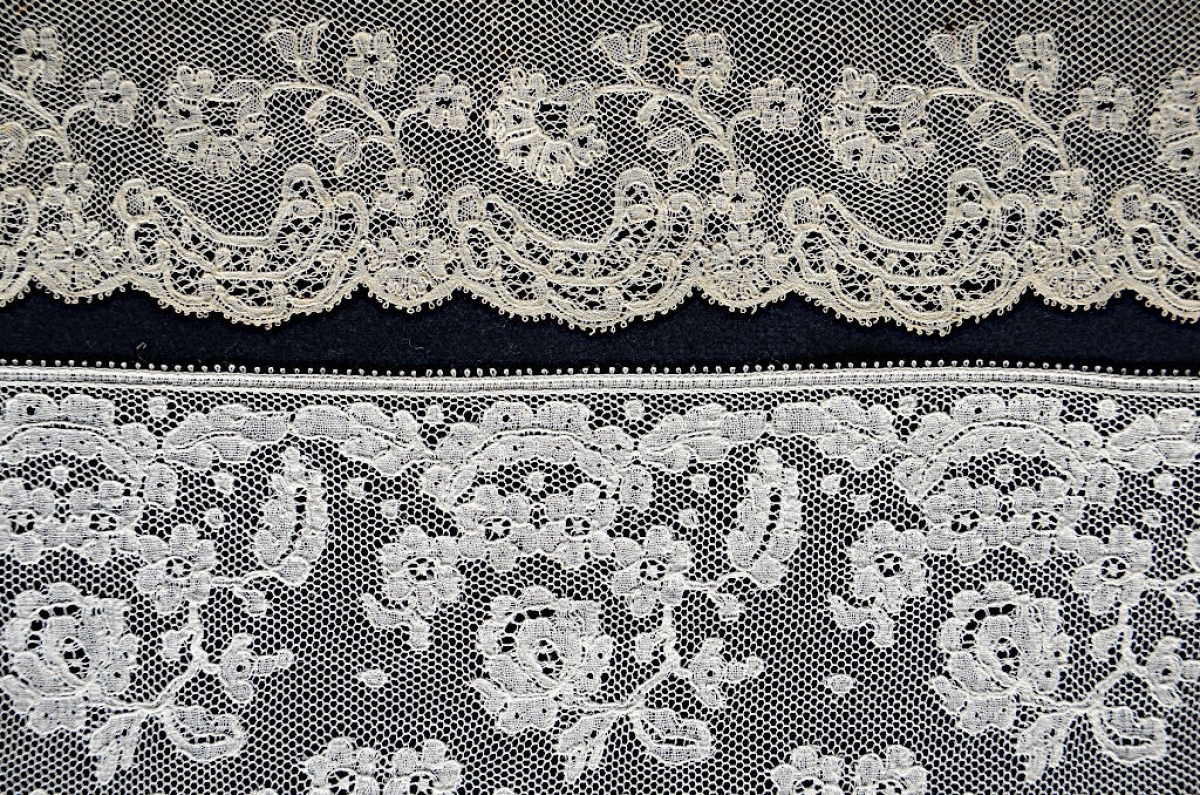Lace Identification 7 Examples
Lace Identification: Seven Examples
Lace is a decorative openwork fabric, gradually built up by the interworking of free threads. The threads are forming holes and solid parts that are essential for the design and deliberately made by special movements like cross and twist.
The first mentioning of lace can be found in the fifteenth century and its popularity expanded in the sixteenth century. There are two main types of handmade lace, namely needle lace and bobbin lace. Needle lace is made with a single thread and one needle, while bobbin lace is made by manipulating multiple threads, wound on bobbins.
Machine made laces emerged during the Industrial Revolution, from the end of eighteenth century. The first machine made laces consisted of a machine produced net, made out of one continuous thread, where the pattern was applied by hand. A further development was the production of patterned laces, sometime around 1840, which could imitate handmade pieces per excellence.
The imitations of handmade laces flooded the market and it can be very difficult to distinguish machine made pieces from their handmade models. This display presents seven examples, each juxtaposing two similar laces from the TRC collection. One is handmade and the other one is machine made.
The exhibition tries to explain the small, but significant differences in the technique of the handmade lace and its machine made imitations. This display categorises the provided examples based on filling, gimp, ground, edge and sides of the lace.
For this online exhibition:
- Author: Lisa Dilitz and Olga Ieromina.
- Web-design: Joost Koopman
- Exhibition design: Lisa Dilitz, Olga Ieromina and Willem Vogelsang
- Publisher: TRC Leiden.
- Year of publication: 2019
- Copyright: All illustrations of objects housed in the TRC collection can be used free of charge, but please add to the caption: "Courtesy Textile Research Centre, Leiden" and the pertinent accession number of the object.








